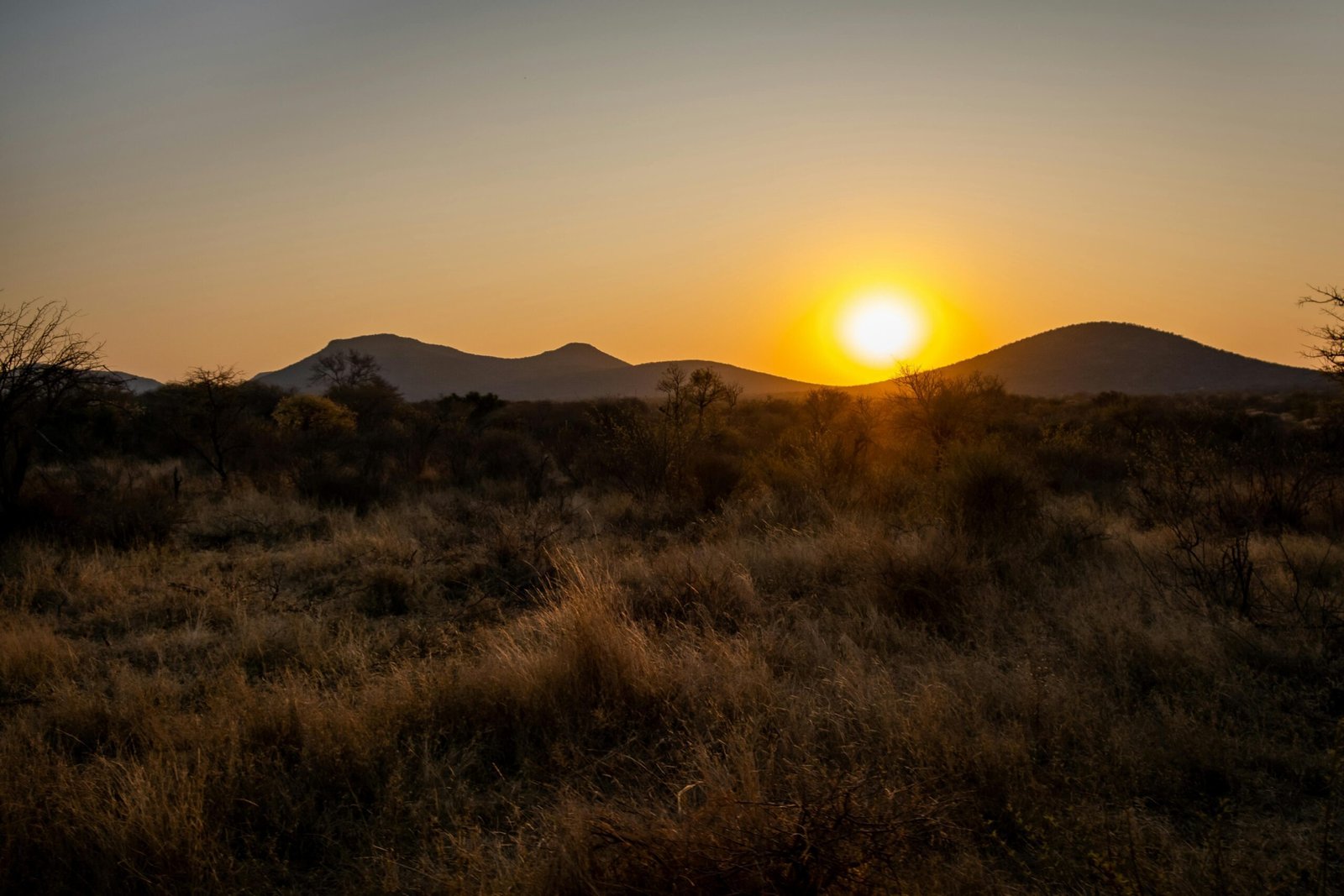One of the most common inquiries among travellers is about the ideal timing for a safari in Tanzania. When is the best time to embark on this adventure?
While there are definitely popular tourism seasons, other factors depend on one’s personal preference. Read on to discover your ideal season to visit Tanzania, based on your tastes and travel interests
Weather is key
Unlike other destinations with traditional seasonal changes like summer, winter, fall, and spring, Tanzania experiences equatorial and tropical weather due to its proximity to the equator and the Indian Ocean.
Tanzania has two main seasons: the wet season characterised by rain, and the dry season which is sunny and occasionally hot. Each season offers its own advantages and disadvantages, detailed below.
When selecting your safari dates, keep in mind that Tanzania’s weather typically fits into these seasons, however, it is fairly common to experience sunny afternoons after a morning of rain during Tanzania’s wet season and occasionally rain during the dry season.
From January to March, Tanzania experiences its hottest months, particularly peaking in February. This period is generally dry and attracts a high number of safari-goers, especially around the New Year. Wildlife congregates around rivers and lakes for water as other sources diminish, making Tarangire National Park a hotspot for observing various species, including zebras, gazelles, lions, and leopards.
March to May brings the “long rainy season,” characterized by rain during nights and mornings. Despite the rain, afternoons tend to be sunny, and evenings are peaceful. The landscape becomes lush and green, providing abundant water sources that make animals more active and lively in the parks. However, rough roads may become impassable due to flooding or mud, although main roads are generally accessible. This season sees fewer tourists, with accommodations often offering discounts, providing an opportunity for a more intimate safari experience amidst the vibrant, green forests.
From June to September, Tanzania enters its “cold” season, although temperatures may still be pleasant for visitors from cooler climates. While mornings can be chilly, afternoons are generally sunny and dry. This period is another popular time for travel in Tanzania, with many visitors flocking to the national parks to enjoy the wildlife and landscapes.
If you’re not a fan of hot weather, this is the ideal time to visit during Tanzania’s dry season. This is also a common time for viewing the Great Migration in Serengeti National Park.
Between October and December, Tanzania experiences the short rainy season, accompanied by warmer temperatures towards the end of the year. October is notable for the blooming of jacaranda trees across East Africa, presenting a stunning sight with purple flowers adorning the trees. In December, Flame Trees burst into vibrant red blossoms, adding to the scenic beauty just before Christmas.
Christmas attracts many tourists to Tanzania, coinciding with the end of the short rainy season by mid-December. Visitors often plan special activities, such as climbing Mount Kilimanjaro, to celebrate the holiday season. Hotels and lodges may offer festive meals for guests. Despite the ideal December weather, parks and accommodations tend to be busier compared to other times of the year.

Join the Journey to know the latest tips news, events, and special offers.
Join 30,000+ subscribers to know about new blog posts, destination guides, and exciting adventures.
Dry Season: Pros and Cons
Pros:
- Enjoyable weather conditions
- Abundance of wildlife sightings
- Classic African scenery with vast dry grasslands and animals congregating around watering holes
- Aligned with holiday seasons, making it convenient for most visitors
Perfect weather for evening swims in hotel/lodge pools
Ideal for family vacations or honeymoons - High tourist activity, providing a lively atmosphere
Cons:
- Parks may feel crowded or busy
- Accommodations typically charge full-price with no discounts
- Dusty conditions towards the end of the dry season may be uncomfortable, necessitating the use of a bandana or handkerchief.
Rainy Season: Pros and Cons
Pros:
- Experience Africa in a different light with lush green forests and active wildlife
- Photographers find the rainy season captivating due to the vibrant contrasts in colors
- Possible discounts on accommodations during the low season
- Parks are less crowded, offering a sense of exclusivity for guests
- Opportunity for a more private adventure experience
Cons:
- Some park roads may become impassable
- Occasional wet days, although rain typically doesn’t persist throughout the day and there’s often significant sunshine
- Recommended to bring a rain jacket and water-resistant shoes for comfort
- Animals may be more dispersed during the rainy season, affecting wildlife sightings.
The Great Migration
One of the most remarkable spectacles in Tanzania is the Great Migration, which takes place in Serengeti National Park. Each year, this awe-inspiring natural event attracts tourists from across the globe to witness the monumental movement of animals as they traverse the Grumeti River. It is a key factor contributing to the Serengeti’s designation as a UNESCO World Heritage Site, representing the largest migration of animals on Earth. The Great Migration occurs annually, spanning the entire area of the Serengeti.
During a brief period, typically lasting around two months, herds of wildebeests and other ungulates journey to Kenya, usually in July and August, undertaking daring river crossings, braving crocodiles and other predators to reach the abundant grasslands of the Maasai Mara. For the majority of the year, these herds remain in Tanzania, primarily in the Serengeti or the Ngorongoro Conservation Area. Here, they engage in mating, give birth to their young, and graze on the lush grasses for approximately ten months annually.
The animals’ continued movement is driven by their innate survival instincts. Herds of wildebeests, gazelles, impalas, elands, and zebras are motivated by the need for adequate water and greener grazing pastures. As the seasons transition from dry to wet, the animals migrate in search of better food and hydration sources, closely trailed by their formidable predators such as lions, cheetahs, and leopards.
Throughout the year, different stages of the Great Migration offer unique opportunities for observation:
- In February, the calving season unfolds, with thousands of baby wildebeests being born daily. It’s a remarkable spectacle witnessing new life and the astonishing ability of newborn wildebeests to run shortly after birth.
- March and April see the herds congregating in the Seronera area of Serengeti, providing captivating photo opportunities of vast numbers of animals peacefully grazing in picturesque surroundings.
- By May, the herds begin their northward migration, forming impressive columns of synchronized animals. They may gather at the Western Corridor to find a safe crossing point over the Grumeti River, offering visitors a chance to witness the remarkable density of animals moving together.
- From July to early September, visitors have the thrilling opportunity to witness the incredible Mara River crossing. Animals brave the perilous waters in vast numbers, creating a heart-pounding spectacle of nature’s raw power. While this phenomenon is often depicted in documentaries like National Geographic, experiencing it firsthand provides a deeply immersive encounter with the energy and force of nature.
You’ll depart with a newfound admiration for Africa’s wildlife and the untouched marvels of nature. It’s remarkable that this annual cycle has persisted for possibly millennia, and we still have the privilege to witness and appreciate it today.
During this yearly migration, there are two significant river crossings: the Grumeti River and the Mara River. These crossings signify the direction of the animal herds:
- The Grumeti River crossing typically occurs from May to June as the herds head into Kenya.
- The Mara River crossing involves the herds moving from Kenya back into Tanzania, often taking place in July and August.
The Great Migration remains an ongoing spectacle in Serengeti National Park, offering something remarkable to witness nearly every time of the year. If witnessing the Great Migration in Serengeti is on your bucket list, this is undoubtedly an opportunity to turn your dream into reality
Optimal Time to Visit Tanzania
Any time of the year offers the opportunity for an exceptional African safari experience in Tanzania. The best time for you depends on personal preferences.
If you prefer a quieter, more intimate safari experience with fewer crowds and the chance to feel like you have the wilderness to yourself, consider visiting during the wet season.
For those seeking vibrant landscapes adorned with nature’s colors and favorable weather conditions, October or November are excellent choices.
If witnessing the remarkable river crossings during the Great Migration in the Serengeti is your goal, opt for dates in July or August, which fall during the dry season.
Experience the ever-moving wildlife and pulsating flora of Tanzania’s national parks throughout the year. Every month offers its own unique wonders, making any time the best time to explore Tanzania. Choose a time that fits your schedule, and prepare to be amazed by the stunning natural beauty and exhilarating wildlife of this incredible country.



Thats great 👍
Yes it is